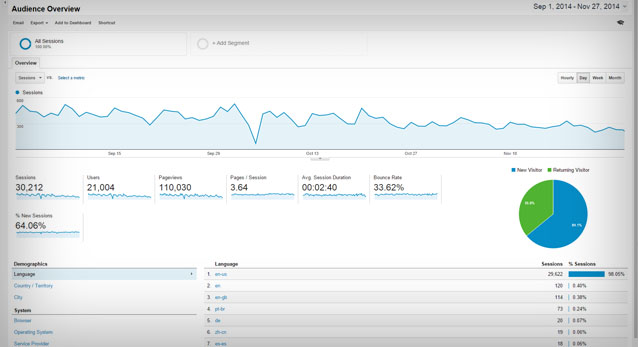- HowToComms
- Posts
- KPIs for Communications Professionals
KPIs for Communications Professionals
Show the value of your department and your efforts

When it comes to the function of communication, measuring success can be deemed very difficult and sometimes unmeasurable. Measuring perception is difficult and measuring awareness as first element of the funnel is just as hard.
Good news for you! It is not impossible at all. It’s actually very possible and very helpful. As the communications department often interacts intensively with the other departments it is important to show that your department matters to their success. Moreover, the communications function is a functions in the business that measures factors that can have incredible effects on revenue : Image & Reputation.
Especially in the current day and age, the public position of a business or organization within society is incredibly important. The aware customer/client/consumer will decide to not work with you or buy your product if you have a bad reputation, just as future employers will not apply if you have a bad employer brand. The way people speak about your organization is detrimental to success
So how do we measure the effectivity of communications?
Nowadays, the interaction between the communications professional and the marketing professional has increased. Communications comes up in every stage of the marketing funnel.
The two groups are much like a cause and effect relationship. The communication objectives build a positive customer attitude, which will then lead to marketing objectives with an increase in the rate of purchases or information requests.
Often though, companies only build marketing objectives due to the fact that communication objectives do not always guarantee an increase in sales. I argue that this is the wrong way to look at it.
Each objective group goes hand in hand affecting the other along with sales. While communication objectives may not always have a measurable affect on sales they will have an impact on marketing objectives and should be allocated accordingly.
Let me give another quick but important sidenote:
The KPIs you choose to measure depend very closely on the objectives of your communications plan. It is also very dependent on the interaction of marketing and communications. Especially in B2B businesses and small businesses these two roles are often intertwined.
For this article I focus on three different levels of KPIs, which can be seen as an inverted pyramid (just like a funnel). From top to bottom, these KPIs are Visibility, Engagement and Conversion.
Visibility KPIs
Visibility KPIs measure the reach of your communications actions.
You can measure these internally through the owned media (find out more about owned media as 1 element of the media model in the article here.)
The KPIs you measure are dependent on the channels you own.
Social Media Visibility
Measure: The number of impressions/views, number of visits, numbers of followers.
Website Visibility
Measure: Number of unique visitors and the rate of these new visitors, Search impressions and click rates
Newsletter Visibility
Measure: Number of Subscribers, Rate of deliverability (quality measure)
How: Newsletter Analytics tools
Engagement KPIs
Engagement metrics measure the success and interest of your communication actions
Social Media Engagement
Measure: Total number of interactions (likes, comments, shares), new subscribers/followers based on posts, rate of clicks, engagement rate
Website Engagement
Measure: Bounce rate (how long people make it past the first page of your website), engagement rate (comments, shares, polls), number of pages visited per sessions, number of visitors per channel
Newsletter Engagement
Measure: Open rate, click-through rate, unsubscribe rate (the less the better!)
Conversion KPIs
Conversion measures the effectiveness of the communications action based on its position in the firm. These conversions come close to marketing conversions. It is also very dependent on the interaction between communications, marketing, business development and sales and the goals of the organization
Measure: Number of messages received, rate of conversion of visitors into leads, number of subscribers to a newsletter or a webinar.
How to measure the KPIs
There are various tools available for measuring the KPIs mentioned above.
For measuring social media KPIs, use campaign and social media analytics tools. Either through the planning tools that you use or directly through the applications.
For website KPIs use Google tools like Analytics or Search Console or other analytics tools like Matomo, Mixpanel, SimilarWeb, SemRush.
The effectivity of your newsletters can be measured through the newsletter analytics tools. I would absolutely recommend choosing a newsletter provider with a strong analytics dashboard. Like this platform BeeHiiv for example! Big fan
But these don’t measure reputation and image?
True and good point. They are the starting point of the measurement. In terms of feasibility it is already a good start. Measuring reputation and brand image requires a bit more savyness. For example social listening. It is also very dependent on how much your business and communications function focusses on it. If you are working with a PR firm or if PR also falls within your scope of work, please do include the results of the PR actions in your evaluation. Especially the measurement of media mentions can be very helpful. The more PR you do, the more effect this will have on your website performance thanks to effective backlinking and the larger reach of your message
To dig deep into brand perception, which is often done in B2C companies, research needs to be done. Often this is done by research companies who can perform social listening experiments and panel interviews.
Did I miss KPIs that you use or is there another topic you would like to see in this newsletter? Please reply and let me know what you think!
Share this Newsletter and get rewards that help you become a better communicator!
By sharing this newsletter you don’t only support me, but also support yourself.
If this is too much of a hassle I understand. Please do share this newsletter on your LinkedIn, Twitter or send it to your colleagues via mail!
Thank you!


